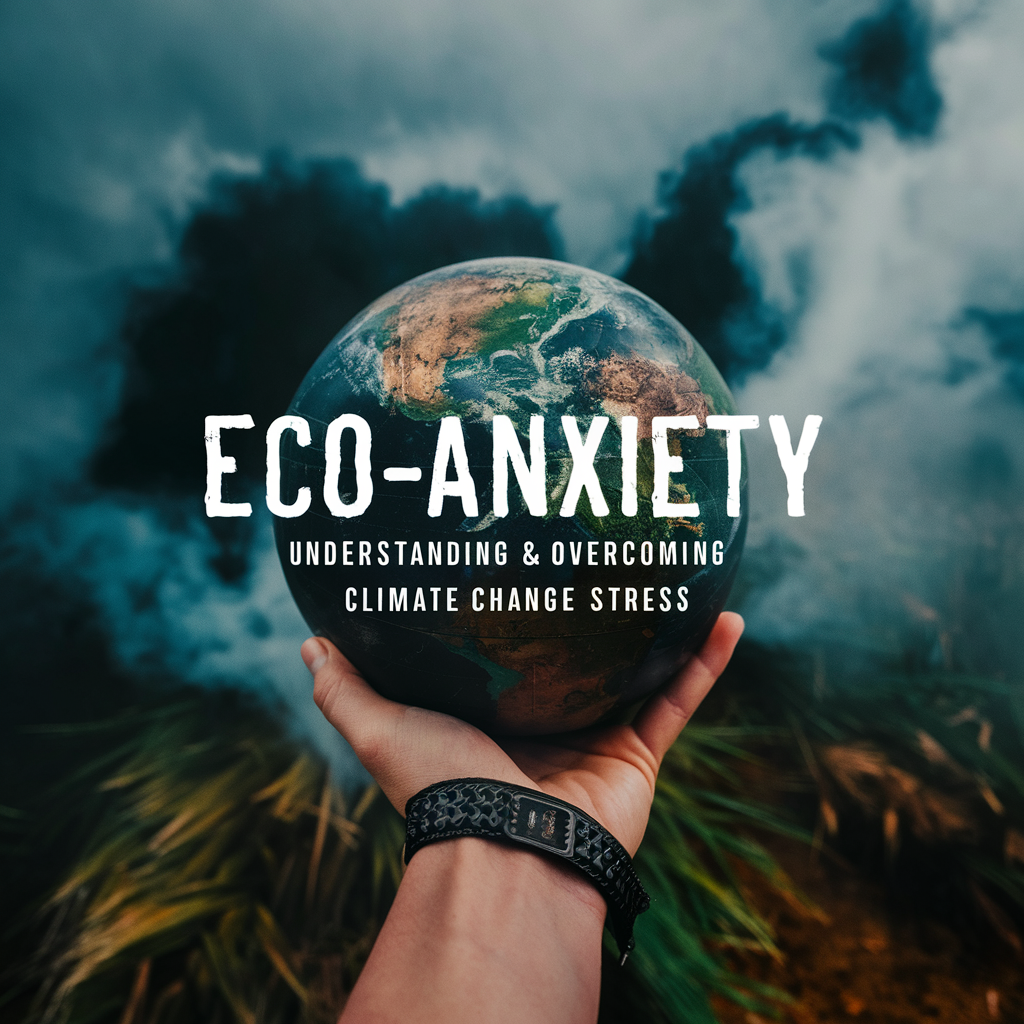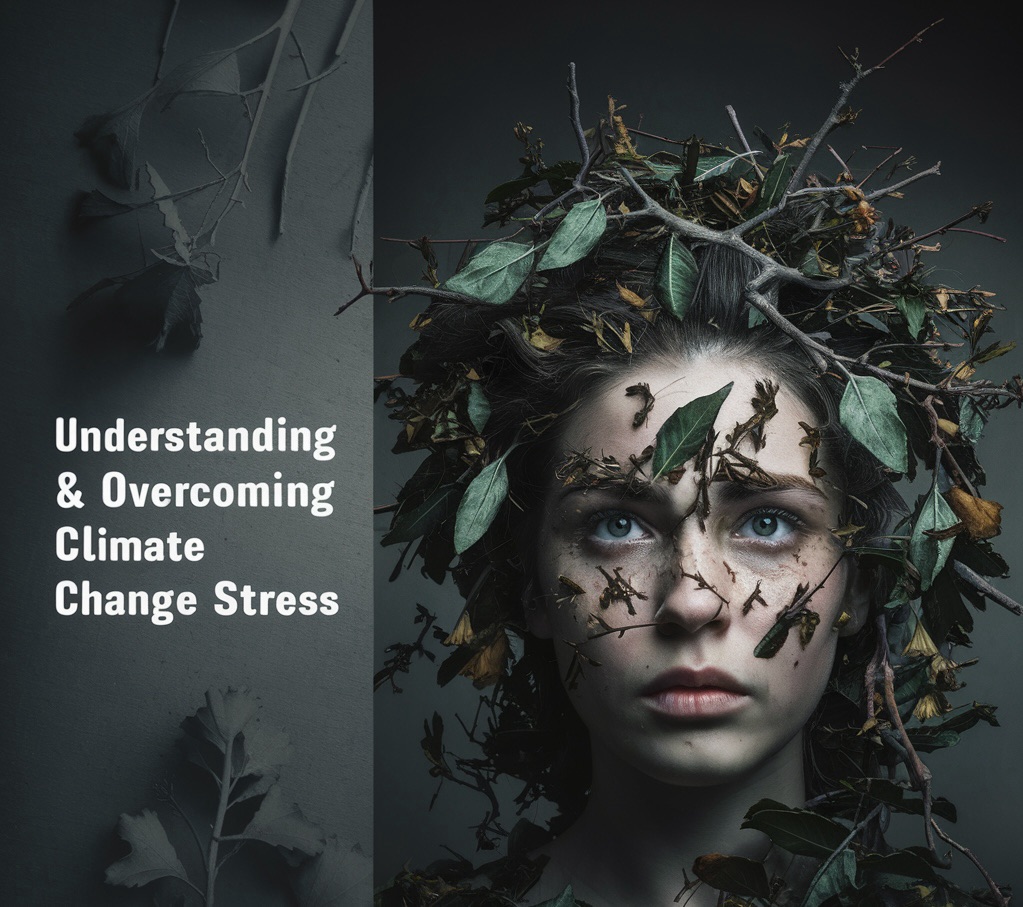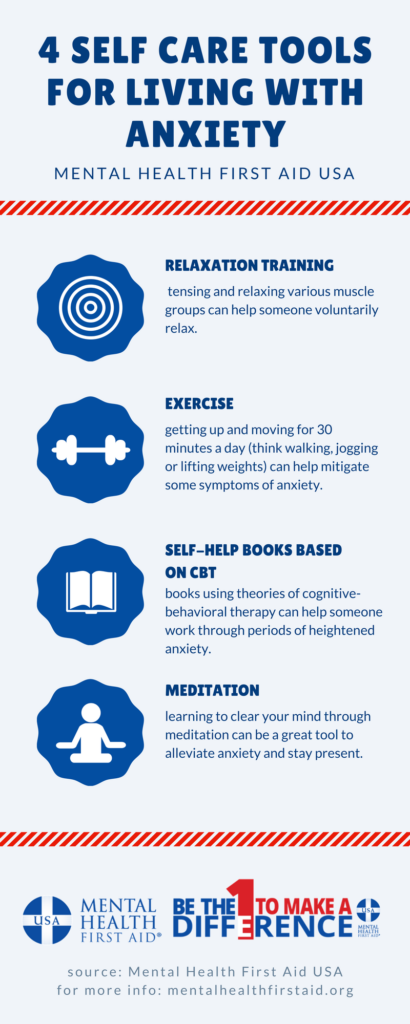
Eco-anxiety, a term that might sound unfamiliar to some, has become an increasingly common experience for many of us. If you’ve ever felt a deep sense of worry, sadness, or helplessness about the state of our planet, you’re not alone. I’ve been there too, lying awake at night, overwhelmed by thoughts of melting ice caps, raging wildfires, and the future of our world. This anxiety about environmental degradation and climate change is real and is affecting more people every day.
What is Eco-Anxiety?
Eco-anxiety is a chronic fear of environmental doom. Unlike general anxiety, eco-anxiety specifically stems from concerns about climate change and the health of our planet. It’s the distress we feel when we hear about another natural disaster or read the latest alarming climate report. It’s the pang of guilt when we think about our carbon footprint or the frustration when we see wasteful practices continue unchecked.
Why is it Important to Address Eco-Anxiety?
Ignoring these feelings doesn’t make them go away. In fact, pushing them aside can make them worse. By understanding and addressing eco-anxiety, we can begin to find ways to cope, take meaningful action, and connect with others who share our concerns. It’s crucial to recognize that eco-anxiety is a natural response to a genuine problem, and acknowledging it is the first step towards managing it.
For anyone seeking a deeper understanding of the environmental issues contributing to these feelings, “The Uninhabitable Earth: Life After Warming” by David Wallace-Wells provides a sobering look at the potential future we face. This book can help contextualize your fears and offer insights into the broader picture of climate change’s impact.
We’re all in this together, and by exploring the causes, symptoms, and coping strategies for eco-anxiety, we can start to reclaim our sense of hope and agency. Let’s dive into what drives eco-anxiety and how we can better manage it.

Causes of Eco-Anxiety
Understanding the roots of eco-anxiety can help us better manage and address these feelings. Eco-anxiety doesn’t just come out of nowhere; it’s driven by a combination of environmental, social, and psychological factors. Let’s explore these causes in more detail.
Environmental Triggers
The most direct cause of eco-anxiety is witnessing the impacts of climate change and environmental degradation. Whether it’s through news reports, documentaries, or personal experiences, the visible and often devastating changes to our environment are hard to ignore. Natural disasters like hurricanes, wildfires, and floods are becoming more frequent and severe, serving as stark reminders of the planet’s vulnerability.
I’ve found myself overwhelmed by the images of burning forests and melting glaciers, feeling a sense of helplessness as I think about the future. These environmental changes are not just abstract concepts; they’re real, tangible events that can profoundly affect our mental well-being.

Social and Psychological Factors
The way information about climate change is presented can also fuel eco-anxiety. We live in an age of constant media coverage, where alarming news is just a click away. Social media amplifies this, often highlighting the most dramatic and distressing stories. This constant exposure can create a sense of doom and urgency, making it hard to escape the feeling that we’re on the brink of catastrophe.
Moreover, the pressure to “do something” can be immense. While individual actions are important, the scale of the problem can make our efforts feel insignificant, leading to frustration and despair. This sense of responsibility without the means to see immediate, large-scale change can be psychologically taxing.
Personal Stories and Impact
For a personal perspective on how eco-anxiety can intertwine with other life stressors, I found “My Journey Through Pain: Battling Headaches, Anxiety, and More” helpful. It’s a touching narrative that connects various aspects of anxiety, providing insights into how interconnected our mental health challenges can be.
By recognizing these triggers and understanding their sources, we can start to develop strategies to manage eco-anxiety more effectively. The next section will delve into the symptoms of eco-anxiety, helping you identify if you or someone you know might be experiencing it. Stressing about eco anxiety? Check out more how Ginger Oil can help you!

Symptoms of Eco-Anxiety
Recognizing the symptoms of eco-anxiety is crucial for understanding and managing it. Eco-anxiety can manifest in various ways, affecting both our mental and physical well-being. By identifying these symptoms, we can take the first steps toward addressing and alleviating this anxiety.
Physical Symptoms
Eco-anxiety often brings with it a range of physical symptoms. These can include:
- Headaches: Persistent tension headaches are a common physical response to chronic stress and anxiety.
- Fatigue: Constant worry about the environment can lead to fatigue and a general sense of being drained.
- Muscle Tension: Anxiety can cause muscles to tense up, leading to discomfort and pain.
- Sleep Disturbances: Difficulty falling or staying asleep, or having restless sleep due to worry about climate change.
- Digestive Issues: Anxiety often affects the digestive system, leading to symptoms like stomachaches, nausea, or changes in appetite.
If you’re experiencing any of these symptoms, it’s important to consider that they might be linked to your concerns about the environment.
Emotional and Behavioral Symptoms
Eco-anxiety also impacts our emotional and behavioral health. Common emotional and behavioral symptoms include:
- Anxiety and Panic Attacks: Intense feelings of fear and panic can be triggered by thoughts about the environment.
- Depression: A sense of hopelessness and sadness about the future of our planet can lead to depressive symptoms.
- Irritability: Increased frustration and irritability, particularly when discussing environmental issues.
- Avoidance: Avoiding conversations or media related to climate change to escape feelings of anxiety.
- Obsession: Becoming overly fixated on environmental issues, leading to difficulty focusing on other aspects of life.
For a more personal exploration of anxiety and how it intertwines with daily life, check out “Anxiety: A Personal Journey Beyond Prescription Medication”. It offers valuable insights into managing anxiety holistically and might resonate with those experiencing eco-anxiety.
Recognizing the Signs in Yourself and Others
It’s not always easy to admit that you’re struggling with eco-anxiety, but recognizing the signs is an important step. If you notice these symptoms in yourself or someone close to you, it’s crucial to acknowledge them and consider seeking support.
Addressing eco-anxiety starts with awareness. By identifying the physical and emotional symptoms, we can better understand how this anxiety manifests and begin to explore strategies to cope with it. In the next section, we’ll discuss who is most affected by eco-anxiety and why certain groups are more vulnerable to this growing concern.

Who is Affected by Eco-Anxiety?
Eco-anxiety doesn’t discriminate, but certain groups are more susceptible to its effects. Understanding who is most affected by eco-anxiety can help us provide better support and resources to those in need. Let’s explore the demographics and reasons behind their heightened vulnerability.
Demographic Analysis
Young People
Young people, especially teenagers and young adults, are particularly vulnerable to eco-anxiety. Growing up with the looming threat of climate change has made environmental concerns a significant part of their daily lives. Many young individuals feel an urgent responsibility to combat climate change, which can be overwhelming. They are often more aware of the scientific realities and future projections, which can lead to feelings of helplessness and fear.
Activists and Environmentalists
Those deeply involved in environmental activism are also at high risk for eco-anxiety. The constant exposure to alarming climate data and witnessing the slow pace of change can lead to burnout and despair. Activists often carry the weight of trying to drive systemic change, which can be an immense emotional burden.
Vulnerability of Young People and Activists
Why Young People are Particularly Affected
Young people are at a stage in life where they are forming their identities and worldviews. The pervasive knowledge that the planet’s future is uncertain can create a profound sense of insecurity. Many young people feel their futures are being compromised, leading to significant anxiety and stress. The pressure to find solutions and make impactful changes can feel like an insurmountable task.
Challenges Faced by Activists
Activists face the dual challenge of fighting for environmental change while managing their own mental health. The pressure to stay informed, advocate for policy changes, and raise public awareness can be exhausting. The emotional toll of witnessing environmental degradation firsthand, coupled with the frustration of slow political and social responses, can lead to severe eco-anxiety.
For insights on how individuals can navigate their anxiety and find holistic ways to manage it, “Holistic Approaches to Managing Anxiety: Nurturing Mind and Body for Well-being” offers valuable perspectives. This can be particularly helpful for those deeply involved in environmental causes, providing strategies to balance activism with self-care.
Support Systems and Resources
Recognizing these vulnerable groups is crucial for providing the necessary support. Schools, universities, and community organizations can play a significant role in offering mental health resources tailored to young people and activists. Support groups, counseling services, and educational programs can help mitigate the effects of eco-anxiety and empower individuals to take constructive action without compromising their well-being.
By understanding who is most affected by eco-anxiety and why, we can better tailor our efforts to support them. In the next section, we’ll delve into the impact of eco-anxiety on daily life, highlighting how it affects mental health, lifestyle, and overall well-being.

Impact on Daily Life
Eco-anxiety can profoundly affect our day-to-day lives, influencing our mental health, lifestyle choices, and overall well-being. Recognizing these impacts is essential for finding ways to cope and maintain a balanced, healthy life.
Mental Health Effects
Anxiety and Depression
Eco-anxiety often manifests as chronic anxiety or depression. The constant worry about the environment can lead to persistent feelings of fear, sadness, and helplessness. This can make it challenging to enjoy everyday activities or maintain a positive outlook on life. It’s not uncommon for those struggling with eco-anxiety to feel overwhelmed by the enormity of the climate crisis, which can exacerbate symptoms of anxiety and depression.
Stress and Burnout
Continuous exposure to environmental issues can lead to significant stress and eventually burnout. Activists and those deeply concerned about the environment may feel exhausted from their efforts to make a difference, coupled with the frustration of slow progress. This emotional exhaustion can impact both personal and professional life, leading to decreased productivity and motivation.
For a personal look at how anxiety, including eco-anxiety, can impact one’s life, consider reading “Natural Remedies for Anxiety and Stress”. This article provides valuable insights into managing stress and anxiety through natural methods.
Lifestyle and Productivity
Changes in Daily Routines
Eco-anxiety can lead to significant changes in daily routines. Individuals might adopt more sustainable practices, such as reducing waste, minimizing energy consumption, and choosing eco-friendly products. While these changes are positive, the pressure to constantly make the “right” choices can be stressful and time-consuming.
Impact on Relationships
The emotional toll of eco-anxiety can strain relationships with family and friends. Conversations about climate change might lead to disagreements or feelings of isolation if others do not share the same level of concern. It’s important to find supportive communities and networks where these concerns can be openly discussed and addressed.
Productivity and Focus
Constant worry about environmental issues can make it difficult to concentrate on tasks at hand. This can lead to decreased productivity at work or school, as the mind is often preoccupied with thoughts of climate change and its implications. Finding ways to manage these thoughts and set boundaries for when to engage with climate news can help maintain focus and productivity.

Physical Health Impacts
Sleep Disturbances
Many people with eco-anxiety report trouble sleeping. The stress and worry can lead to insomnia or restless nights, further impacting overall health and well-being. Establishing a calming bedtime routine and limiting exposure to distressing news before bed can help improve sleep quality.
Physical Symptoms of Stress
The physical symptoms of stress, such as headaches, muscle tension, and digestive issues, are common among those with eco-anxiety. These symptoms can further exacerbate feelings of anxiety, creating a vicious cycle. Incorporating relaxation techniques like meditation, yoga, and aromatherapy can be beneficial.
For practical ways to manage these physical symptoms, consider using an Aromatherapy Essential Oil Diffuser Gift Set. Aromatherapy can help create a calming environment, reducing stress and promoting relaxation.
By understanding how eco-anxiety impacts daily life, we can begin to implement strategies to mitigate these effects and lead healthier, more balanced lives. The next section will explore various coping strategies for managing eco-anxiety effectively.
Coping Strategies for Eco-Anxiety
Dealing with eco-anxiety requires a multi-faceted approach, combining mental health practices, lifestyle changes, and community support. Here are some effective strategies to manage and reduce eco-anxiety, helping you regain a sense of control and well-being.
Mindfulness and Stress Management Techniques
Meditation and Mindfulness
Practicing meditation and mindfulness can significantly reduce anxiety levels. These techniques help you stay present and manage stress by focusing on the here and now, rather than worrying about the future. Apps like Calm and Headspace offer guided meditations specifically designed to alleviate anxiety.
Journaling
Writing down your thoughts and feelings can be therapeutic. Keeping a journal allows you to process your emotions and reflect on your experiences. It can also help you track triggers and recognize patterns in your anxiety. For a structured approach, consider the Anxiety Tracker PDF, which provides templates for tracking and managing anxiety.
Exercise
Regular physical activity is a proven stress reliever. Exercise releases endorphins, which help improve mood and reduce anxiety. Whether it’s yoga, running, or a daily walk, finding a form of exercise you enjoy can make a significant difference.
Aromatherapy
Using essential oils can create a calming environment and reduce stress. An Aromatherapy Essential Oil Diffuser Gift Setcan be a great addition to your relaxation routine. The soothing scents of lavender, chamomile, or eucalyptus can help ease anxiety and promote relaxation.
Eco-Friendly Practices
Sustainable Living
Adopting eco-friendly practices can provide a sense of agency and control. Simple actions like recycling, reducing plastic use, and conserving energy can make a difference. Knowing that you’re contributing positively to the environment can alleviate feelings of helplessness.
Gardening
Connecting with nature through gardening can be incredibly therapeutic. Whether it’s tending to houseplants or starting a small garden, engaging with the natural world can help reduce stress and foster a sense of accomplishment. For an easy start, consider growing plants like the Bearded Iris No Count Blues, which are both beautiful and low-maintenance.
Educational Resources
Educating yourself about climate change and sustainability can be empowering. Knowledge is a powerful tool in combating anxiety. Reading books like “The Uninhabitable Earth: Life After Warming” can provide a deeper understanding of the issues and inspire action.
Professional Help and Support
Therapy and Counseling
Seeking professional help is a crucial step in managing eco-anxiety. Therapists specializing in anxiety disorders can provide tools and techniques to cope with your fears. Cognitive-behavioral therapy (CBT) is particularly effective in addressing anxiety and changing negative thought patterns.
Support Groups
Connecting with others who share your concerns can provide a sense of community and support. Look for local or online support groups focused on eco-anxiety and environmental activism. Sharing experiences and strategies can be incredibly validating and encouraging.
Mental Health Resources
Using comprehensive mental health guides can offer additional strategies and insights. The Mental Health Guide Bundle PDF includes resources for understanding and managing various aspects of mental health, including anxiety.
Balanced Approach to News Consumption
Limiting Media Exposure
While staying informed is important, constant exposure to negative news can exacerbate anxiety. Set boundaries for when and how you consume news about climate change. Designate specific times for checking updates and avoid reading distressing news before bed.
Positive News Sources
Balance your news consumption with positive and hopeful stories about environmental progress. Websites and publications that focus on solutions and success stories can provide a more balanced perspective and reduce feelings of despair.
Implementing these strategies can help manage eco-anxiety, providing tools to cope with stress and take positive action. In the next section, we’ll discuss professional treatment options, including therapy and support groups, for those who need additional help.

Professional Treatment Options For Eco Anxiety
When eco-anxiety becomes overwhelming, seeking professional help is a crucial step. Professional treatment can provide tailored strategies and support to manage anxiety effectively. Here are some options to consider:
Therapy and Counseling
Cognitive-Behavioral Therapy (CBT)
Cognitive-Behavioral Therapy is a highly effective treatment for anxiety disorders, including eco-anxiety. CBT helps individuals identify and change negative thought patterns that contribute to their anxiety. By learning to reframe these thoughts and develop healthier coping mechanisms, individuals can reduce their overall anxiety levels.
Eco-Therapy
Eco-therapy, also known as nature therapy, involves engaging with nature as a therapeutic practice. This can include activities like hiking, gardening, or simply spending time in natural settings. Eco-therapy helps reconnect individuals with the environment in a positive way, promoting mental well-being and reducing stress.
Mindfulness-Based Stress Reduction (MBSR)
MBSR is a structured program that combines mindfulness meditation and yoga to reduce stress and anxiety. It teaches individuals to focus on the present moment and develop a non-judgmental awareness of their thoughts and feelings. MBSR can be particularly helpful for those struggling with eco-anxiety, providing tools to manage stress and cultivate a sense of calm.
Support Groups and Community Initiatives
Support Groups
Joining a support group can be incredibly beneficial for those dealing with eco-anxiety. Support groups provide a safe space to share experiences, express fears, and learn from others facing similar challenges. These groups can offer emotional support, practical advice, and a sense of community.
Community Initiatives
Engaging in community initiatives focused on environmental action can help alleviate feelings of helplessness. Participating in local clean-up efforts, conservation projects, or sustainability workshops can provide a sense of purpose and accomplishment. It also offers the opportunity to connect with like-minded individuals who share your concerns and passions.
Digital and Online Resources
Anxiety Tracker PDF
For those who prefer self-guided tools, the Anxiety Tracker PDF is a valuable resource. This tracker helps individuals monitor their anxiety levels, identify triggers, and implement coping strategies. Keeping track of progress can provide insights into patterns and areas for improvement.
Mental Health Guide Bundle
The Mental Health Guide Bundle PDF offers comprehensive resources for understanding and managing mental health issues, including eco-anxiety. This bundle includes guides on mindfulness, stress reduction, and practical tips for maintaining mental well-being.
Magnesium Supplements
Sometimes, nutritional support can aid in managing anxiety. Magnesium is known for its calming properties and can help reduce anxiety symptoms. The Magnesium Citrate 500 MG supplement is a high-absorption option that supports relaxation and overall mental health. Always consult with a healthcare professional before starting any new supplement.
Finding the Right Help
Choosing a Therapist
When selecting a therapist, look for someone experienced in treating anxiety and who understands the specific challenges of eco-anxiety. Personal referrals, online reviews, and professional directories can help you find a qualified therapist. Don’t hesitate to ask potential therapists about their experience with eco-anxiety and their approach to treatment.
Exploring Multiple Options
Remember that managing eco-anxiety often requires a combination of strategies. Therapy, support groups, mindfulness practices, and lifestyle changes can all play a role in improving mental health. Be open to exploring different options to find what works best for you.
Professional treatment can make a significant difference in managing eco-anxiety, providing the tools and support needed to navigate these challenging feelings. In the next section, we’ll discuss how sustainable living can act as a remedy for eco-anxiety, offering practical tips and insights on integrating eco-friendly practices into daily life.

Sustainable Living as a Remedy
Adopting sustainable living practices can be a powerful way to alleviate eco-anxiety. By making eco-friendly choices, you can feel more empowered and connected to the solutions, rather than overwhelmed by the problems. Here’s how sustainable living can help and practical steps to get started.
Benefits of Sustainable Practices
Sense of Control
One of the most challenging aspects of eco-anxiety is the feeling of helplessness. Sustainable living allows you to take tangible actions that contribute positively to the environment. This sense of control can significantly reduce feelings of anxiety and stress.
Positive Impact
Knowing that your actions are making a difference, no matter how small, can provide a sense of accomplishment and hope. Every sustainable choice, from reducing waste to conserving energy, contributes to a larger collective effort to protect the planet.
Improved Mental Health
Engaging in sustainable practices often involves spending more time outdoors, eating healthier, and connecting with nature—all of which are beneficial for mental health. These activities can reduce stress, improve mood, and enhance overall well-being.
Simple Ways to Live Sustainably
Reduce, Reuse, Recycle
Start with the basics: reduce your consumption, reuse what you can, and recycle properly. This can include everything from using reusable bags and water bottles to choosing products with minimal packaging.
Conserve Energy
Implementing energy-saving measures at home can significantly reduce your carbon footprint. Switch to LED bulbs, unplug devices when not in use, and consider energy-efficient appliances. Simple actions like these can make a big difference over time.
Sustainable Food Choices
Opt for locally-sourced, organic, and plant-based foods. Reducing meat consumption and supporting sustainable agriculture practices can lower your environmental impact. Gardening at home is another great way to grow your own food sustainably.
Gardening
Growing your own plants, whether indoors or in a garden, can be incredibly therapeutic and sustainable. Consider starting with easy-to-grow plants like the Bearded Iris No Count Blues. Gardening not only provides a source of fresh produce but also helps you connect with nature and reduce stress.
Eco-Friendly Products
Incorporate eco-friendly products into your daily routine. For example, the Aromatherapy Essential Oil Diffuser Gift Setnot only helps reduce anxiety but also promotes a sustainable lifestyle by using natural essential oils.
Educational Resources
Books and Guides
Educating yourself about sustainability and environmental issues can empower you to make informed decisions. “The Uninhabitable Earth: Life After Warming” offers an in-depth look at the future of our planet and the urgent need for action. Reading such books can deepen your understanding and inspire further sustainable practices.
Online Resources
There are numerous online resources and communities dedicated to sustainable living. Websites, blogs, and social media groups offer tips, support, and inspiration for making eco-friendly choices.
Individual Actions and Sense of Control
Small Steps Add Up
Remember, every small action contributes to a larger impact. Whether it’s choosing a reusable coffee cup, biking to work, or composting food scraps, these actions add up. Focus on what you can control and celebrate your progress.
Set Achievable Goals
Set realistic and achievable goals for incorporating sustainable practices into your life. Start with one or two changes and gradually add more as you feel comfortable. This approach prevents feeling overwhelmed and makes the transition to sustainable living more manageable.
Community Involvement
Join Local Initiatives
Get involved in local environmental initiatives and organizations. Community clean-ups, conservation projects, and sustainability workshops are great ways to take action and connect with others who share your concerns.
Advocate for Change
Use your voice to advocate for environmental policies and practices in your community. Whether it’s through petitions, attending town meetings, or engaging in social media campaigns, your advocacy can drive broader change.
Living sustainably not only benefits the environment but also significantly reduces eco-anxiety by fostering a sense of control and accomplishment. In the next section, we’ll explore the power of community and collective action in addressing eco-anxiety and promoting environmental well-being.
Community and Collective Action
While individual actions are essential, the collective power of communities can drive significant change and help alleviate eco-anxiety. Being part of a community effort can foster a sense of belonging and purpose, making the daunting task of tackling climate change feel more manageable.
Power of Community Support
Shared Goals and Efforts
Working with others toward a common goal can be incredibly motivating. Community support provides a network of like-minded individuals who share your concerns and are equally committed to making a difference. This collective effort can amplify your impact and create a stronger sense of hope and determination.
Emotional and Social Support
Communities offer emotional and social support that can help buffer the effects of eco-anxiety. Engaging with others who understand and share your feelings about the environment can provide validation and reduce feelings of isolation. Support groups, whether in person or online, can be a safe space to express concerns and share coping strategies.
Empowerment Through Action
Participating in community initiatives can empower individuals by showing that collective action can lead to tangible results. Seeing the positive outcomes of community projects, such as cleaner parks, reduced local pollution, or successful advocacy efforts, can reinforce the belief that change is possible.
Examples of Successful Initiatives
Local Clean-Up Campaigns
Community clean-up events are a practical way to make a visible difference. Organizing or participating in local clean-ups can help reduce litter, protect wildlife, and beautify neighborhoods. These events also provide opportunities to educate others about the importance of reducing waste and recycling.
Sustainability Workshops
Workshops focused on sustainability practices, such as composting, energy conservation, or organic gardening, can empower individuals with knowledge and skills. These educational events can be hosted by local environmental organizations, schools, or community centers.
Advocacy and Policy Change
Communities can also drive change at a policy level. Advocacy groups that focus on environmental legislation, sustainable development, and climate action can influence local, state, and national policies. Joining such groups can amplify your voice and contribute to broader systemic change.
Collective Gardening Projects
Community gardens are another great example of collective action. These gardens not only provide fresh, local produce but also foster a sense of community and environmental stewardship. Gardening together can reduce stress, promote physical activity, and create green spaces that benefit everyone.
Resources and Tools for Community Engagement
Online Platforms and Social Media
Using online platforms and social media can help organize and promote community events. Groups on Facebook, local forums, and apps like Meetup can connect individuals interested in environmental action. These platforms can be used to share information, coordinate activities, and build a supportive network.
Educational Resources
Providing educational resources, such as books, guides, and online articles, can help inform and inspire community members. The Mental Health Guide Bundle PDF offers comprehensive information on managing anxiety, which can be valuable for community discussions and support groups.
Inspiring Collective Action
Case Studies of Community Success
Highlighting case studies of successful community actions can inspire others to get involved. Sharing stories of how local groups have made a difference can provide a blueprint for other communities to follow. These stories can be shared through local media, newsletters, or social media.
Encouraging Participation
Encouraging community members to participate can be done through outreach and engagement efforts. Hosting informational sessions, creating flyers, and leveraging social media can raise awareness and invite more people to join.
Long-Term Benefits of Community Involvement
Building Resilience
Communities that work together to address environmental issues build resilience against future challenges. This collective resilience not only helps the environment but also strengthens social bonds and enhances overall well-being.
Creating Lasting Change
Community actions can lead to lasting change by establishing sustainable practices and influencing policies. These long-term impacts can create healthier, more sustainable communities that are better equipped to handle environmental challenges.
By harnessing the power of community and collective action, individuals can find support, amplify their efforts, and drive meaningful change. In the next and final section, we’ll explore various resources available for those struggling with eco-anxiety, providing a comprehensive guide to further help and information.

Resources for Further Help For Eco-Anxiety Issues
Finding the right resources can make a significant difference in managing eco-anxiety. Whether you’re looking for educational materials, self-help tools, or professional support, there are plenty of options available. Here’s a comprehensive guide to resources that can help you understand and cope with eco-anxiety.
Books and Websites
Educational Books
Reading books on climate change and mental health can provide valuable insights and coping strategies. Here are some recommended reads:
- “The Uninhabitable Earth: Life After Warming” by David Wallace-Wells. This book offers an in-depth look at the potential future impacts of climate change, helping contextualize fears and inspire action.
Informative Websites
Several websites offer in-depth information on eco-anxiety and related mental health topics:
- Health Survivalist provides articles and personal stories about anxiety, including eco-anxiety. Notable articles include:
Digital Tools and Apps
Anxiety Trackers
Keeping track of your anxiety can help identify triggers and patterns. The Anxiety Tracker PDF offers a structured way to monitor your anxiety levels and implement coping strategies.
Meditation and Mindfulness Apps
Apps like Calm, Headspace, and Insight Timer offer guided meditations and mindfulness exercises designed to reduce anxiety and stress. These apps provide a convenient way to practice relaxation techniques anytime, anywhere.
Professional Help
Therapy and Counseling
Seeking professional help from a therapist can provide personalized strategies for managing eco-anxiety. Cognitive-Behavioral Therapy (CBT), eco-therapy, and Mindfulness-Based Stress Reduction (MBSR) are effective approaches. When looking for a therapist, consider asking about their experience with eco-anxiety and anxiety disorders.
Support Groups
Joining a support group can offer emotional support and practical advice from others facing similar challenges. Local mental health organizations, environmental groups, and online forums can connect you with support networks.
Nutritional and Lifestyle Support
Magnesium Supplements
Nutritional support, like magnesium supplements, can help reduce anxiety symptoms. The Magnesium Citrate 500 MGsupplement supports relaxation and overall mental health. Always consult with a healthcare professional before starting any new supplement.
Aromatherapy
Using essential oils can promote relaxation and reduce stress. The Aromatherapy Essential Oil Diffuser Gift Set includes essential oils known for their calming properties, such as lavender and chamomile.
Community and Collective Action Resources
Local Environmental Organizations
Many local organizations offer volunteer opportunities, sustainability workshops, and community events focused on environmental action. Getting involved can provide a sense of purpose and community support.
Online Communities
Online platforms and social media groups dedicated to environmental issues can offer support and inspiration. These communities provide a space to share experiences, learn from others, and collaborate on projects.
Comprehensive Guides and Bundles
Mental Health Guide Bundle
The Mental Health Guide Bundle PDF offers a range of resources for understanding and managing mental health, including eco-anxiety. This bundle includes guides on mindfulness, stress reduction, and practical tips for maintaining well-being.
By leveraging these resources, you can gain a deeper understanding of eco-anxiety and access tools and support to manage it effectively. Remember, you’re not alone in this journey, and taking proactive steps can significantly improve your mental health and overall quality of life.

As an Amazon Associate we earn from qualifying purchases through some links in our articles.




